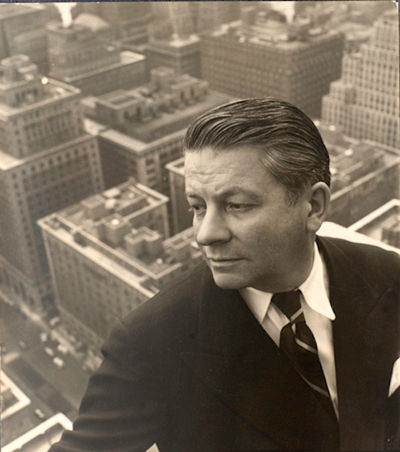Prince Philip - An Extraordinary Life.
- Kelly Claman

- Apr 17, 2021
- 4 min read
Updated: Apr 27, 2021
This week, the world lost an extraordinary man who lived a truly remarkable life. Prince Philip, Duke of Edinburgh was the longest serving Royal Consort in British history, having dedicated his whole life to his Queen, Country and the Commonwealth. His Royal Highness redefined the role of consort to a reigning Queen and played an instrumental part in shaping the modern Elizabethan Age.

(Photo: @TheRoyalFamily.)
Prince Philip of Greece and Denmark was born in 1921 to Princess Alice of Battenberg, a grand-daughter of Queen Victoria, and Prince Andrew of Greece and Denmark. His early life was turbulent and nomadic, with the family fleeing from Greece in the midst of political turmoil shortly after Philip's birth. He was to live intermittently in France, Germany and Britain, shuffling between relatives throughout his early school years before attending Gordonstoun in Scotland, where he excelled.
Upon the completion of his education, Prince Philip joined the Royal Navy. It was the beginning of a distinguished military career. As Lt. Philip Mountbatten, he served with courage and distinction during World War II, taking part in the Battle of Cape Matapan as well as the invasion of Sicily, and on 2 September, 1945 he witnessed the formal signing of Japan’s surrender.
In 1939, 13-year old Princess Elizabeth met the dashing 18-year old Prince Philip at Royal Naval College, Dartmouth whilst on a Royal Visit with the King and Queen and her sister Princess Margaret. The young Elizabeth fell in love at first sight and the two began writing to one another. The correspondence continued throughout the war years, while Philip served in the Royal Navy, and it developed from a friendship into a romance, and ultimately into enduring love and companionship. Buckingham Palace announced the couple’s engagement in July of 1947 and they were married that November at Westminster Abbey, becoming the Duke and Duchess of Edinburgh.
Prince Philip remained with the Royal Navy during the early years of marriage. Between 1949 and 1951 he was stationed on Malta where the Edinburghs enjoyed a more relaxed life together, away from the formality of the court. But this was very much the calm before the storm. The following year would see the death of George VI and the accession of Elizabeth II, marking the end of Prince Philip’s active military service. The loss was profound for a man so deeply committed to his career in the Navy, but there was never any question for the Duke, who would often say that his first, second and last job was to never let The Queen down. It is unlikely that he ever did.
Early on in Her Majesty's reign, while the reserved young Queen was still finding her footing in her new role, it was Prince Philip who would put her at ease with his wicked wit and sense of fun, whether on tour, at the State Opening of Parliament or behind the scenes of the annual Christmas broadcast. As The Queen herself has said, Prince Philip was her "strength and stay", and he remained so for the rest of his life.
There has never been an official position or constitutional role for the husband of the Queen, and for a man of Prince Philip’s virility and independent spirit, it would not have been easy to exist in the shadow of his wife, forever 3 paces behind her. It was up to The Duke to carve out a useful position for himself within the establishment, where he could be of service, which he did with aplomb. One of Prince Philip’s greatest achievement was the creation of the Duke of Edinburgh Awards programme, aimed at improving the lives of youth in the UK and around the world through volunteer work, physical challenges, self-improvement and adventure, instilling self-confidence and a strong work ethic in participants. Since it’s inception in 1956, over 6 million people have taken part in the programme which continues to this day.
The Duke was a vibrant man with many interests ranging from engineering and philosophy to conservation and sport. Carriage-driving, for which he helped develop the early rules, was a particular passion, which he passed on to his grand-daughter, Lady Louise. He was also a yachtsman, a pilot, an artist and an author, and he sought wherever possible to apply his knowledge to improving the administration of "The Firm". The Duke understood that times were changing and he was committed to ensuring that the monarchy would remain relevant in the modern age. He embraced technology as no previous member of the Royal Family ever had, and he encouraged The Queen to do the same, in fact it was he who persuaded The Queen to admit television cameras into Westminster Abbey to record her coronation, allowing the public to share in the historic occasion as never before.
From the moment of The Queen’s accession up until his own retirement at 96 years old, Prince Philip dedicated himself entirely to the nation and Commonwealth. The Duke carried out 22,219 solo engagements, undertook 637 overseas tours, and was patron of over 700 organizations, yet despite all his accomplishments, he remained modest, dismissing praise and detesting formality. Over the years and through his many acts of service, as well as through his unwavering devotion to the Queen, Prince Philip touched many lives, not only in the UK and Commonwealth, but around the world and amongst all walks of life. He will forever be remembered as a selfless man of character and fortitude, who for 74 years gave everything to his Queen and Country.
Sources:
Philip Eade - Prince Philip: The Turbulent Life of the Man who Married Queen Elizabeth II
Gyles Brandreth - Philip and Elizabeth: Portrait of a Marriage
Basil Boothroyd - Prince Philip: An Informal Biography
Ingrid Seward - Prince Philip Revealed
Royal.UK



Comments